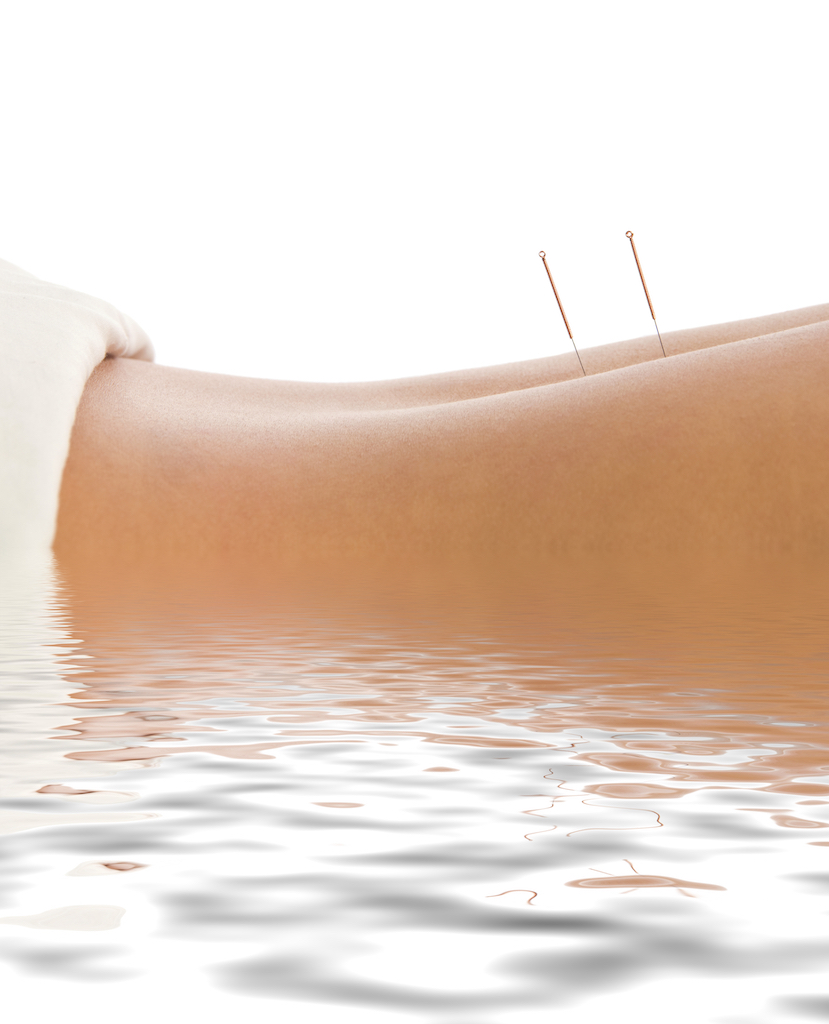Would you call a balneotherapist or try red light therapy to treat acne or psoriasis break outs? Would you trust a reflexologist or an aromatherapist to help with your asthma? Would you turn to cryotherapy or compression therapy to treat your arthritis? No matter how weird they might seem, alternative medical practices are gaining traction in the U.S.
What is alternative medicine?
Alternative therapy refers to any non-standard health treatment as defined by Western medical practice. When used as companions to standard medical practices, these alternative approaches are called “complementary” medicine. Because of the inherent diversity, complementary and alternative approaches to healing are sometimes difficult to understand. The benefits of alternative therapies are topics of debate and research. However, that doesn’t stop millions of people from checking them out and endorsing them.
According to a 2021 report by Grand View Research, a U.S. company that completes more than 2,000 multi-country research studies worldwide, the global complementary and alternative medicine market size was valued at $82.27 billion in 2020 and is expected to expand at a compound annual growth rate (CAGR) of 22.03 percent from 2021 to 2028. The market is set to gain momentum in the coming years due to changes in regulation, coupled with hefty government initiatives.
Here are some of the practices that are changing the way Americans approach medical care:
Naturopathy. Naturopathic medicine is premised on the healing power of nature. Naturopathic doctors are trained in both conventional and alternative medicines and seek to understand the cause of a condition by exploring its mental, physical, and spiritual manifestations in patients. It involves a variety of treatment techniques, including nutrition, behavioral changes, herbal medicine, homeopathy, and acupuncture.
Botanicals (herbal medicines) are the most widely used alternative medicines (38.5 percent in 2020). In most cases, they are used in the form of dietary supplements along with standard food and medicine. Formulations include tablets, ointments, teas, syrups, and whole herbs.
Acupuncture. Though many associate needles with acupuncture, the term more accurately describes stimulation of specific points on the body, whose best-known variety involves penetrating the skin with thin needles controlled by a practitioner. However, electrical stimulation can also be used. Stimulation occurs at the body’s “meridians,” which are energetic channels that may become blocked or out of balance. The pressure to those specific points can unblock the energy and allow the qi or chi (life force) to resume its natural flow.
It is widely accepted that acupuncture yields positive results on many types of chronic pain, such as neck pain and osteoarthritis. Acupuncture may also be effective for tension or chronic headaches, and many plastic surgeons and med spas are using acupuncture on the face for non-invasive beauty treatments.
Acupressure/Compression therapy. Acupressure is similar in practice to acupuncture, only no needles are involved. Practitioners use their hands, elbows, or feet to apply pressure to specific points along the body’s meridians. Studies have revealed that acupressure is effective for insomnia, pain relief (including lower back, headaches, and labor pains), and mental health issues.
Compression therapy helps improve the flow of blood and lymphatic fluid and boost recovery, circulation, and healing. This machine treatment (typically used in 30-60-minute sessions) applies controlled, dynamic pressure to extremities like the arms, legs and hips and can be used to treat various lymphedema conditions, including venous insufficiency by moving blood toward the heart. Compression can be particularly helpful to massage and loosen stiff muscles and joints after a long run or tough workout by releasing lactic acids.
Chiropractic medicine. Chiropractic medicine is widely accepted in the medical community, deeming it more “complementary” than alternative. It focuses on the musculoskeletal and nervous systems, treating issues in the back, neck, joints, arms, legs, and head.
Many people have had a spinal manipulation, or “adjustment,” which involves applying controlled force (typically the chiropractor’s hands) to joints that have become hypomobile. The concept is that when surrounding tissues are injured either during a single event, like tweaking a muscle during a weight-lifting session or through repetitive stress, like sitting with poor posture for extended periods, then joint movement becomes restricted, so adjustments are needed to restore mobility and loosen the muscles, allowing tissues to heal and the pain to resolve. Studies generally affirm its efficacy, with research suggesting it can improve conditions like neck or low back pain.
Cryotherapy. Applying something cold to an injury or ache has been an accepted medical treatment for centuries, dating back to the 1600s. Whole Body Cryotherapy is exposure to subzero temperatures. Extreme cold stimulates skin sensors activating a central nervous system response. This causes the release of endorphins, the body’s natural pain inhibitors and mood elevators, while the enhanced circulation decreases inflammation by clearing toxins and metabolic waste and increased oxygen and nutrient-rich bold stimulates faster healing. After treatment, the normal body temperature is gradually restored, and normal blood flow is enhanced.
Cryotherapy’s reported benefits surpass pain relief, reduced inflammation, and faster recovery. It’s also used to treat stress-related conditions, such as anxiety, depression, and insomnia. As well as burning 500-800 calories after a cryotherapy session, patients say they feel more energized.
Red light therapy. Just as plants need light to grow, light provides functional support for the human body. Red Light Therapy (also known as Photo biomodulation Therapy) uses red and infrared wavelengths of light that may help to boost energy levels, relieve minor pain and swelling, and balance your mood—all in as little as 10 minutes per day. By using low levels of red or near-infrared light, healing and energy is delivered to the body’s cells. The low wavelength red light produced by the red light machines is absorbed by the mitochondria in the body, which are responsible for many important processes in your day to day health, healing abilities, and energy production.
IV drips. IV Drips infuse a liter of fluids with essential vitamins, nutrients, minerals and amino acids that go far beyond water alone. Whether you’re committed to the prospect of reducing cellular damage with vitamin C, aiding your body’s energy production with B12, or relaxing while supporting muscle health with magnesium, drip ingredients can be customized to deliver the nutrients your body and mind would benefit from most. Many people get IV drip therapy before they travel so they can boost their body’s natural defense system. Others schedule IV drips after explosive workouts to replenish hydration and essential nutrients after sweating it out.
Aromatherapy. Aromatherapy uses essential oils—highly concentrated extracts from the roots, leaves, seeds, or blossoms of plants—to promote healing, and can be traced back 5,000 years. Oils can be inhaled using a diffuser or diluted in a carrier oil and massaged into the skin. Some treat inflammation or infections while others are used to promote relaxation and calm. Clinically, researchers have focused on aromatherapy for anxiety, depression, pain relief, nausea, and insomnia. In a recent study, aromatherapy with lavender was found to promote sleep and reduce anxiety for patients with heart disease. Another study reports that pregnant women who inhaled linalool (found in mint) and linalyl acetate (found in lavender) felt calmer after just five minutes. Like other therapies, it is recommended to consult a trained professional to use this method of healing.
Ayurvedic medicine. Also known as Ayurveda, this modality originated in India and has been around for thousands of years. Practitioners use a variety of techniques, including herbs, massage, and specialized diets, with the intent of balancing the body, mind, and spirit to promote overall wellness. Several studies support positive results for specific Ayurvedic practices, such as taking turmeric for inflammation, using a neti pot to clear the sinuses (called nasal irrigation), or swishing coconut oil in your mouth to pull out bacteria (known as oil pulling).
Yoga, too, is first mentioned in Ayurvedic texts. Research shows that a regular yoga practice can address a range of mental and physical health issues like anxiety, depression, high blood pressure, and insomnia, among others.
Balneotherapy. Sometimes confused with hydrotherapy, balneotherapy involves the use of water for therapeutic purposes, and it dates as far back as 1700 BCE. It’s a popular course of treatment in several European countries to this day: think thermal baths in Hungary. It’s based on the idea that water benefits the skin and might treat a range of conditions from acne to pain, swelling to anxiety. Practitioners use mudpacks, douches, long soaks, and wraps in attempts to reap the many rewards. For this reason, it’s often called “spa therapy.” Balneotherapy has been studied for its effects on chronic pain, with many positive results.
The take-away
The field of alternative medicine is vast. New therapies and studies are cropping up all the time. Integrating a handful of these into your routine may have solid benefits to your health. There’s a reason some of these have been around for thousands of years, after all. As long as you’ve consulted with a doctor or practitioner you can rely on, do what works for you, which probably includes a combination of Western medicine and complementary therapies.
As always, listen to your body. No one knows it better than you do.



